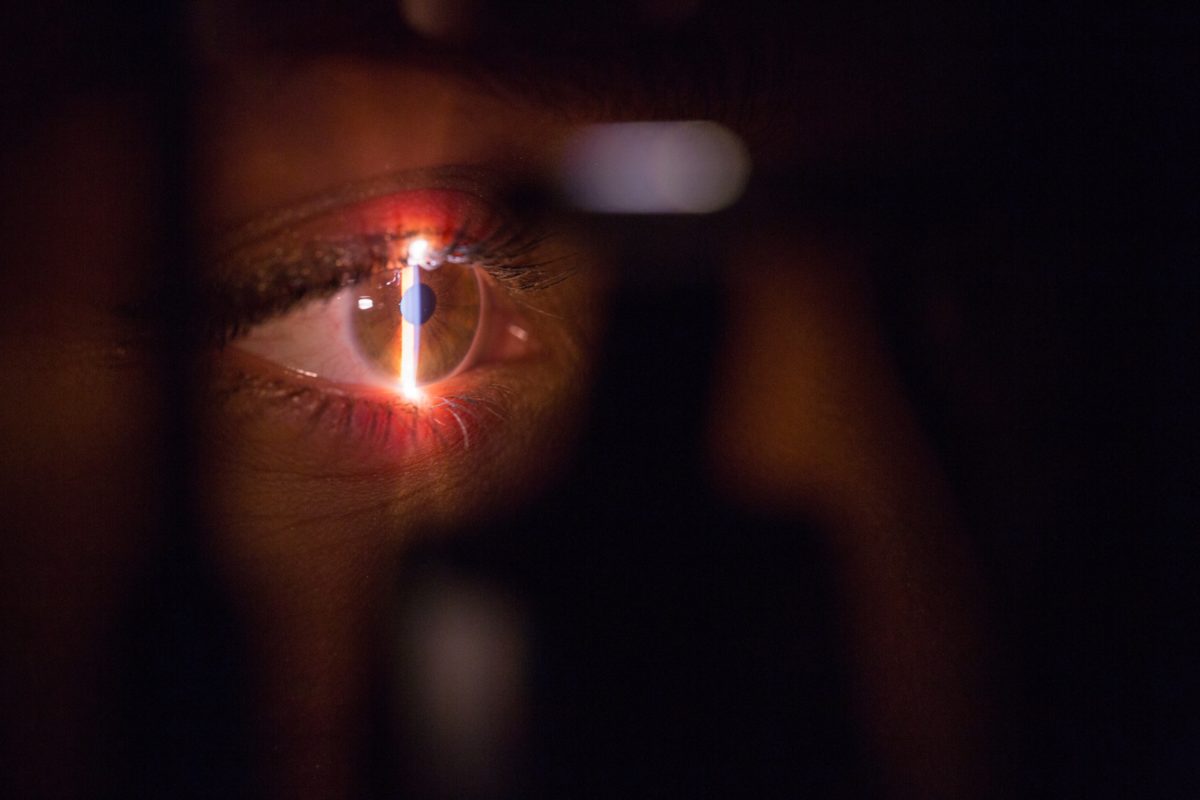The aqueous humor is a thin and transparent fluid in the eye that highly resembles plasma fluid. The fluid contains 99.9% water and 0.1% sugars, proteins, vitamins, and other nutrients; aqueous humor fills the anterior and posterior chambers of the eye. However, it shouldn’t be confused with vitreous humor, which occupies the space between the eye lens and retina, also called the vitreous chamber or posterior cavity.
Production of Aqueous Humor
The aqueous humor is formed and reabsorbed continually in the anterior and posterior chambers of the eye. The formation and reabsorption of this fluid are determined by the volume of aqueous humor remaining and intraocular pressure of the eye. However, the standard rate of production from the ciliary body in the anterior cavity is 2µL/min. Most of the formed fluid is secreted to the posterior chamber of the anterior cavity of the eye.
Aqueous humor then flows from the posterior chamber into the anterior chamber through the pupil. Some fluid can diffuse freely into the posterior cavity to nourish the retina, providing a crucial route for delivering nutrients and removing waste from non-vascularized parts of the eye.
As mentioned, aqueous humor is produced by the ciliary body then secreted through the ciliary processes. Epithelial cells lining the ciliary processes regulate the production and composition of aqueous humor. While the composition of this fluid highly resembles that of arterial plasma and CSF, aqueous humor has a high ascorbate concentration than blood plasma. It also has reduced amounts of protein and blood cells.
The Roles of Aqueous Humor
Key functions of the aqueous humor include;
- It inflates the globe of the eye and maintains intraocular eye pressure. Just to mention, intraocular eye pressure is the hydrostatic pressure responsible for keeping the eyeball in a spherical shape and keeps the eyeball walls taut.
- It nourishes the eye tissues, including the lens, trabecular meshwork, cornea, and anterior vitreous.
- It transports ascorbate, which is an antioxidant, to the anterior part of the eye.
- It contains immunoglobulins that protect the eye from pathogens
- It supports the expansion of the cornea to provide protection against wind, dust, pollen, and other pathogens
- It helps maintain the refractive index of the eye
- Prevents drying of the eye
Drainage of Aqueous Humor
As mentioned, aqueous humor is continually produced and secreted through the ciliary processes. However, the rate of production should be equal to the rate of drainage. Otherwise, a small variation in the rate of production and drainage will affect the intraocular pressure.
That said, the aqueous humor first drains through the posterior chamber and flows through a tight space between the anterior lens and posterior iris before entering the anterior chamber through the pupil. It then exits the anterior chamber of the eye into the Schlemm’s canal through the trabecular meshwork.
Clinical Significance of the Aqueous Humor
Like other parts of the eye, the aqueous humor is a fundamental component, ensuring that the eyes’ health and optical physics are maintained. Continuous formation and drainage of this fluid are crucial for the eye’s size, shape, and quality of vision.
That said, glaucoma is a major eye condition that results from imbalanced formation and drainage of aqueous humor. Glaucoma is an eye condition that occurs due to damage to the ganglion cells of the retina and their corresponding axons. Increased intraocular pressure, either due to increased production or reduced outflow, is a major risk factor for this condition.
The Bottom Line
The importance of aqueous humor in the eye shouldn’t be understated. It nourishes, supports the eye structure, and maintains intraocular pressure.




